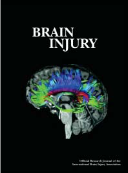Objective: To evaluate the performance of the EyeTribe compared to the EyeLink for eye movement recordings during a rapid number naming test in healthy control participants.
Background: With the increasing accessibility of portable, economical, video-based eye trackers such as the EyeTribe, there is growing interest in these devices for eye movement recordings, particularly in the domain of sports-related concussion. However, prior to implementation there is a primary need to establish the validity of these devices. One current limitation of portable eye trackers is their sampling rate (30–60 samples per second, or Hz), which is typically well below the benchmarks achieved by their research-grade counterparts (e.g., the EyeLink, which samples at 500–2000 Hz).
Methods: We compared video-oculographic measurements made using the EyeTribe with those of the EyeLink during a digitized rapid number naming task (the King-Devick test) in a convenience sample of 30 controls.
Results: EyeTribe had loss of signal during recording and failed to reproduce the typical shape of saccadic main sequence relationships. In addition, EyeTribe data yielded significantly fewer detectable saccades and displayed greater variance of inter-saccadic intervals than the EyeLink system.
Conclusion: Caution is advised prior to implementation of low-resolution eye trackers for objective saccade assessment and sideline concussion screening.
Summary Points:
- King-Devick Test was used as the test of choice for this comparative study of two eye trackers (EyeLink 500-2000Hz) vs. EyeTribe 30-60Hz) due to the numerous studies demonstrating an increase in K-D test scores in athletes with concussion compared with baseline measures.
- There were significant quantitative differences between the data acquired by the two eye tracking systems with the most notable differences involving the overall qualitative characteristics of the results.
- Authors caution the use of low-resolution eye trackers due to frequent signal loss, eye movement data that did not appear to conform to any previously published pattern of results or normal ocular motor physiology, and significantly fewer saccades detected as a result of the low sampling rate.
- An additional consideration in the use of portable eye tracking systems in a sideline concussion screen is that the eye position data generated by such systems requires filtering, conversion and interpretation by computational scientists and other experts, expertise not typically available to athletic trainers, team physicians or sports parents.
- Findings demonstrate that care should be taken prior to implementation of commercially available, low-resolution, portable eye movement recording devices for use in obtaining objective ocular motor recordings.

